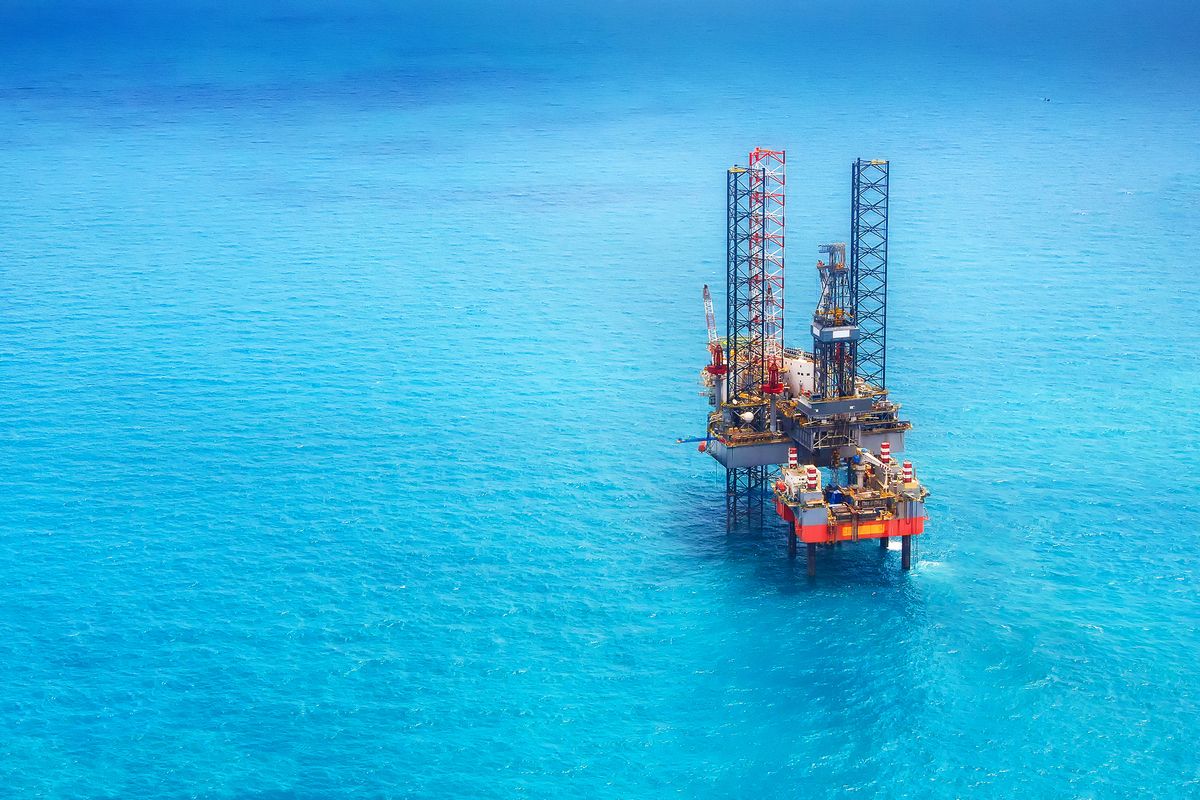What happened
Shares of offshore oil and gas drilling-rig operators fell by double digits across the board in November, with share declines of at least 15% for all the major players in the space, according to data from S&P Global Market Intelligence.
These included Transocean (RIG 0.47%) and Noble Corp. (NE +0.00%), which had the smallest drops of "just" 15.7% and 16.9%, respectively. Ensco (ESV +0.00%) and master limited partnership Seadrill Partners (SDLP +0.00%) fared even worse, with share declines of 20.6% and 20.8%, respectively. But the big loser for the month was Seadrill Limited (SDRL +0.00%), which gave back nearly one third of its value in a 33.1% decline.

The offshore oil-rig industry is still trying to regain its footing after years of underperformance. Image source: Getty Images.
Why it happened
Investors in the oil-rig industry are no strangers to price declines at this point. During the oil-price slump of 2014-2017, the prices of these offshore-rig stocks declined by more than 80%. Indeed, of these stocks, the best performer over the past five years is Transocean, whose shares have dropped by "only" 82.8%. But that's positively rosy compared to Seadrill Partners' 92.2% loss. And Seadrill Limited, after a quick trip through bankruptcy protection, has lost 99.9% of its value over the last five years.
Believe it or not, though, these are the lucky companies: Some, like Atwood Oceanics, didn't make it at all. Atwood was purchased for a song by Ensco in 2017.
Just as in 2014, the culprit for the losses in November was the price of oil. Because deepwater and ultra-deepwater drilling require specialized drillships, they are the most lucrative for oil-rig operators. The drillships that handle such drilling command much higher dayrates than other types of drilling vessels. So when deepwater and ultra-deepwater projects are being started left and right, oil-rig operators do especially well, because competition for the limited supply of such drillships can drive dayrates even higher.
The problem is: Although the costs to produce a barrel of oil from a deepwater or ultra-deepwater play can ultimately be nearly as low as (or sometimes, lower than) conventional onshore drilling, the upfront costs are huge and logistics are more complicated. During the oil-price downturn, production companies didn't have money to spare to take on those significant costs, and preferred instead to focus on cheaper onshore shale opportunities. Demand dried up, rig companies had to stack or dry-dock significant portions of their fleets, and revenue and earnings plummeted.
When oil prices dropped by about 22% in November, investors feared that production companies would once again get cold feet about deepwater and ultra-deepwater exploration, so they sold off shares.
So what
Up until mid-October, oil-rig companies had been having a pretty good year -- except for Seadrill Limited, which encountered a whole mess of problems related to its emerging from bankruptcy. But the others had been having a better year than they'd had for quite some time. In fact, through Oct. 15, most were handily outperforming the S&P 500. Noble and Ensco were particular outperformers, up 52% and 49.2%, respectively.
Oil prices had been increasing all year up to that point; Brent crude prices were up 21.3%, while WTI crude prices were up 18.8%. But then oil prices began to decline, and so did rig operators' stocks. All of the companies mentioned here gave back their year-to-date gains and then some. All are sitting on double-digit losses for the year.
If oil prices can't stabilize at levels where significant offshore investment makes financial sense, oil-rig operators -- and their investors -- are in for a world of hurt.
Now what
This just goes to show how difficult it's going to be for offshore-rig operators to get back on their feet after the oil-price slump. With global oversupply fears easing a bit earlier this year, oil production companies seemed prepared to start spending again, including on offshore projects. But those fears of a supply glut have returned in recent months, and it's unclear how OPEC is planning on moving forward. News reports of a production-cut agreement among OPEC nations and Russia, of 1.2 million barrels per day, were undercut by the murky details of the plan and Iran's assertion that it had received a waiver and wasn't required to cut production at all (which OPEC denies).
And the industry may not have a whole lot of time to sort things out before some major Permian Basin pipeline projects come online in 2019 and 2020. Those will help ease production constraints in the Permian and introduce new supply to the market, but may cause prices to fall again.
Even though they seem to be trading at bargain-basement prices right now, offshore-rig stocks are still incredibly risky. For those who are interested in the sector, there are more compelling oil investments.




